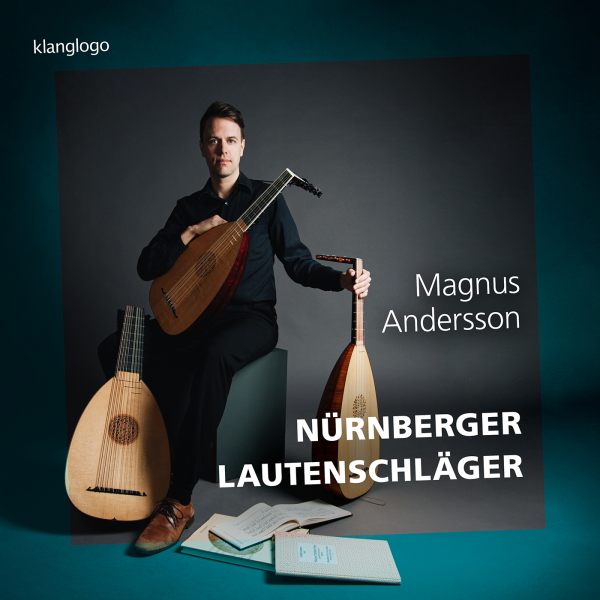Virtuoso Lute Music from Nuremberg
Magnus Andersson lute
66:02
Klanglogo KL2537
Click HERE to buy this recording on amazon.co.uk
[Doing so supports the artist and using such sponsored links keeps this site FREE!]
This interesting CD is an anthology of renaissance lute music from 16th-century Germany. It begins with music by Adolf Blindhamer (c.1450-c.1531), who was lutenist to the Holy Roman Emperor Maximilian I (1459 – 1519). It is possible that Blindhamer is one of the lutenists depicted in the well-known set of woodcuts known as “The Triumphs of Maximilian”. Impressive is Magnus Andersson’s performance of Blindhamer’s jolly Nach-Dancz to Ach Betler, which bounces along with a steady foot-tapping beat, and is not held back by the exceedingly fast flurries of notes which appear from time to time.
There is much interesting information about the composers, the sources of their music, and their connection with Nuremberg, to be found in John Robinson’s liner notes. Blindhamer was awarded citizenship of Nuremberg. One of his pupils may have been Hans Gerle (c.1500-1554), whose books of lute music were published in Nuremberg. Andersson plays four pieces from them, including a particularly attractive setting of T’Andernaken, which he sustains well with effective contrasts of tone.
Nuremberg was the home of Hans Newsidler (c.1508/9-63), who busied himself producing six books of lute music and at least 18 children. Andersson plays three of Newsidler’s intabulations: Tartara by Heinrich Isaac similar in style to T’andernaken, a sober Sancta Trinitas by Antoine de Févin, and a bright Cum sancto spiritu by Josquin des Prez. All three pieces are from Newsidler’s Der Ander Theil des Lautenbuchs (1536), which contains harder, more extensive pieces than those in his first book which was aimed at beginners. Ornate figuration is a feature of the intabulations in Der Ander Theil, but Andersson does not let the apparently mindless divisions obscure the musical integrity of the original.
There follows a Passamezzo and Saltarello pair by one of Hans Newsidler’s lute-playing sons, Conrad Newsidler (1541-1603). The divisions, which have interesting chromatic inflections, float over a static bass, which eventually moves to create some pleasing harmonic clashes. The Passamezzo and Saltarello should be contrasting movements, so I would have preferred to hear the Saltarello played a little faster. In contrast are two short sacred pieces set by Conrad Newsidler, which plod along as do so many Lutheran hymns.
Conrad’s older brother, Melchior Newsidler (1531-c.1595), was an exceptionally skilled lutenist. His Recercar Primo is a particularly fine piece of counterpoint, slow-moving, with unexpected changes of direction, rather like Bakfark on a good day. The CD comes to a peaceful end with Melchior Newsidler’s intabulation of Bewahr mich Herr, over seven minutes long.
The organist and composer Hans Leo Hassler (1564-1612) was born in Nuremberg. Andersson plays two canzonas by Hassler which appear in a lute book owned by one Michael Eysertts (c.1580-after 1600), who lived in Nuremberg. It is not clear who made the intabulations, so Eysertts’ contribution may have been no more than owning a book.
Andersson uses three lutes built by Lars Jönsson, which are strung in gut with strings from Aquila and Kürschner. There is a tendency for treble notes to be louder and brighter than those lower down, which is probably more to do with a sound engineer’s switch than the luthier or string-makers. Unfortunately, there are a fair few squeaks and other extraneous noises coming from the strings. That, together with an echoey acoustic makes me wonder if the microphone was placed a bit too close to the lute for the recording.
Stewart McCoy
